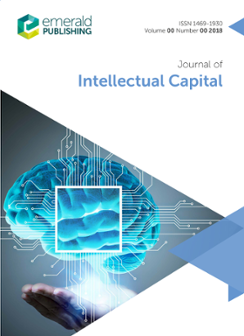Exploring the mediating role of social capital and pro-social motivation in the relationship between CSR and creative deviance
IF 6.8
2区 管理学
Q1 BUSINESS
引用次数: 0
Abstract
PurposeThis study aims to explore the underlying mechanisms of the less studied relationship between perceived corporate social responsibility (CSR) (both internal and external) and creative deviance (CD). Based on the signalling and social capital (SC) theories, this study proposes that the relationship between CSR and CD is mediated by both the prosocial motivation and SC of the employees.Design/methodology/approachThis study conducted a survey approach to gathering data and implemented a structural equation modelling technique for analysis.FindingsData collected from telecom employees supported the sequential mediation of both SC and prosocial motivation on the relationship between internally and externally perceived corporate social responsibility and CD.Research limitations/implicationsThe in-depth analysis of the similarities and differences in the internal and external dimensions of CSR is valuable for understanding the antecedents of CD.Practical implicationsThe in-depth analysis of the similarities and differences in the internal and external dimensions of CSR is valuable for understanding the antecedents of CD. Managers can use this knowledge to improve their performance by following better CSR practices that in turn foster SC and CD. By supporting SC, companies will be able to increase their intellectual capital (IC), which is necessary to compete in today's markets.Originality/valueThe present literature is mostly silent on the differences and similarities between perceived CSR and employee creative behaviour: CD. The present study fills this gap by investigating this important relationship and testing its underlying mechanisms for internally and externally perceived CSR separately. The paper puts forward the key role of SC, which is part of IC, in reinforcing the relationship between CSR and CD.社会资本和亲社会动机在企业社会责任与创造性偏差关系中的中介作用
目的本研究旨在探讨企业社会责任感知(包括内部和外部)与创造性偏差(CD)之间的关系的潜在机制。基于信号理论和社会资本理论,本研究认为企业社会责任与员工自我认知之间的关系是由员工的亲社会动机和社会资本共同介导的。设计/方法/方法本研究采用调查方法收集数据,并采用结构方程建模技术进行分析。研究发现电信员工的数据支持了企业社会责任内外部感知与企业社会责任之间关系的顺序中介效应。研究局限/启示对企业社会责任内外部维度的异同进行深入分析,对于理解企业社会责任的前因具有重要价值企业社会责任的内部和外部维度对于理解企业社会责任的前提是有价值的。管理者可以通过遵循更好的企业社会责任实践来提高绩效,从而促进企业社会责任和企业社会责任。通过支持企业社会责任,公司将能够增加其智力资本(IC),这是在当今市场竞争所必需的。目前的文献大多对感知到的企业社会责任和员工创造性行为之间的差异和相似之处保持沉默。本研究通过调查这一重要关系,并分别测试其内部和外部感知到的企业社会责任的潜在机制,填补了这一空白。本文提出了集成电路中的供应链在加强企业社会责任与企业发展之间关系中的关键作用。
本文章由计算机程序翻译,如有差异,请以英文原文为准。
求助全文
约1分钟内获得全文
求助全文
来源期刊

Journal of Intellectual Capital
Multiple-
CiteScore
14.50
自引率
13.30%
发文量
27
期刊介绍:
The Journal of Intellectual Capital is a peer-reviewed international publication dedicated to the exchange of the latest research and best practice information on all aspects of creating, identifying, managing and measuring intellectual capital in organisations. The journal publishes original research and case studies by academic, business and public sector contributors on intellectual capital strategies, approaches, frameworks, tools, techniques and technologies in order to increase the understanding of intellectual capital within the context of the modern knowledge economy. The focus of this journal is on the identification of innovative intellectual capital strategies and the application of theoretical concepts to real-world situations.
 求助内容:
求助内容: 应助结果提醒方式:
应助结果提醒方式:


